Both payees and accounting professionals love electronic funds transfer (EFT), and for good reason. It drastically reduces the time required to process payments, eliminates paper, and helps avoid fraud.
There are three windows that must first be set up properly to be able to use the EFT/ACH feature in Microsoft Dynamics 365 Business Central:
- Company Information
- Bank Account
- Vendor Bank Account
Setting up Company Information
Populate the following fields with the company’s bank information:
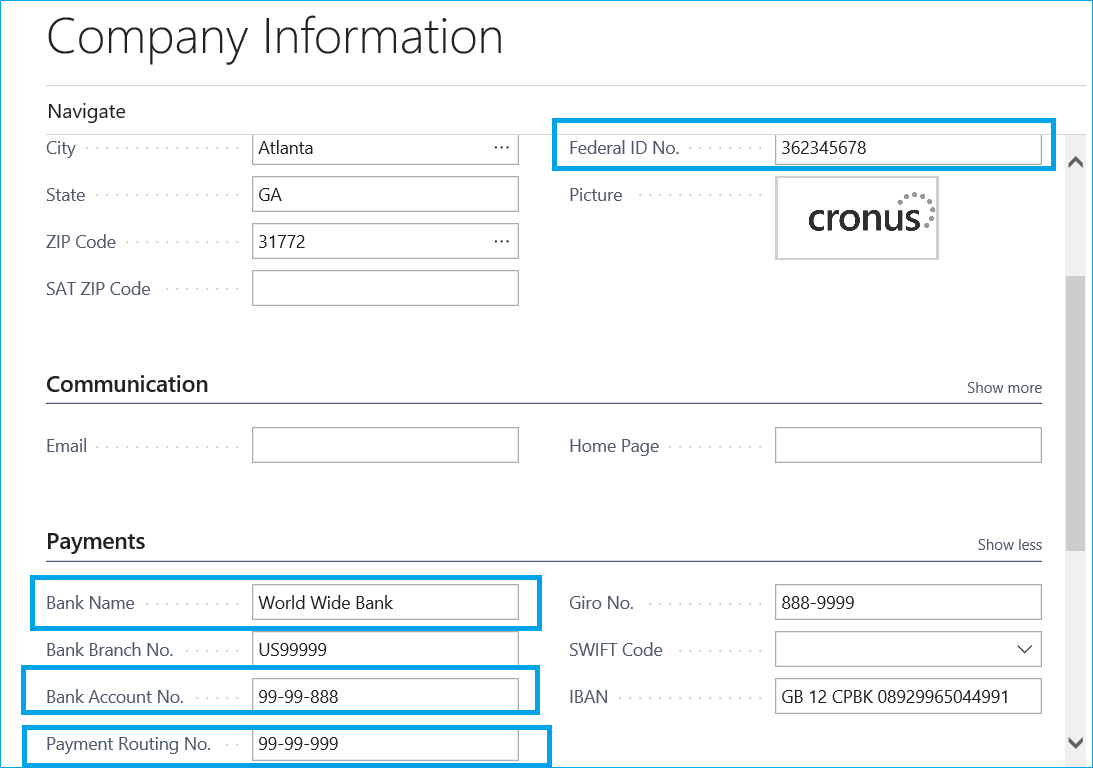
How to Set Up the Bank Account Info
Enter the information related to the bank account that you will be producing EFT files. Be sure to enter a file name in the “E-Pay Export File Name” field.
In this example, we will work with the US EFT CCD file format.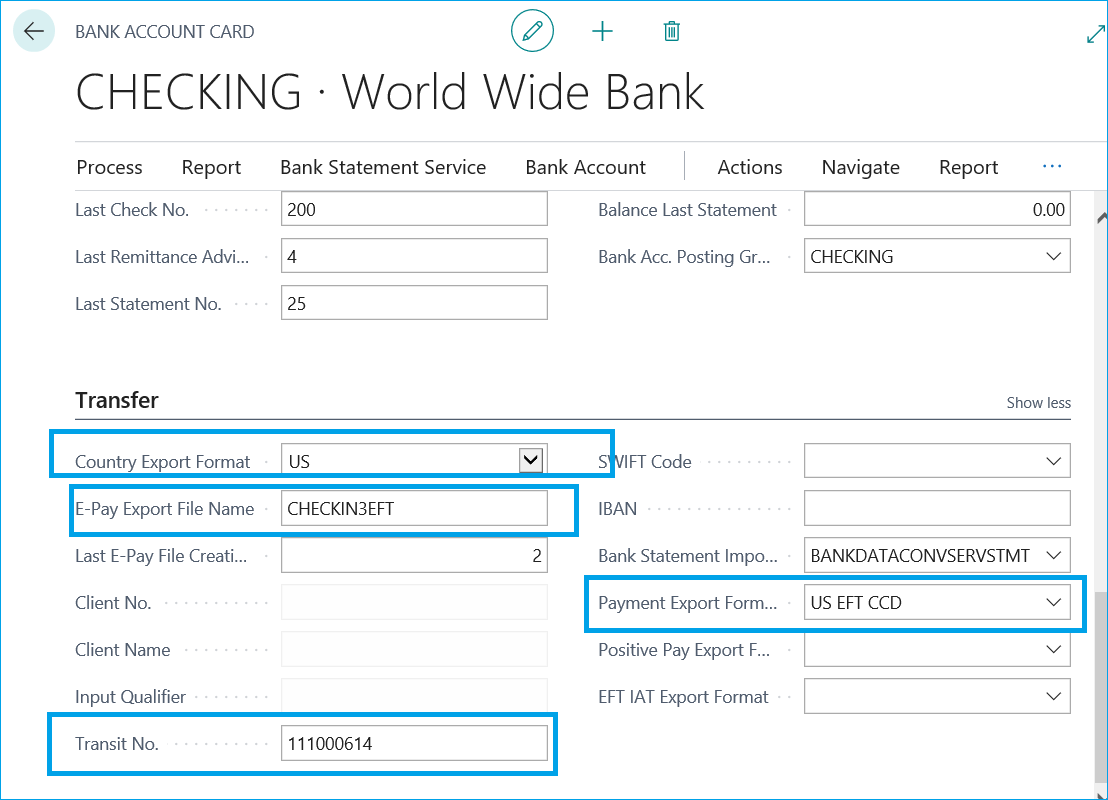
Open up the vendor card window and select the ‘default payment method code’ in the Payment section of the window. In this example, I set one up called US EFT (make sure the Bal Account Type is set to “Bank Account”).
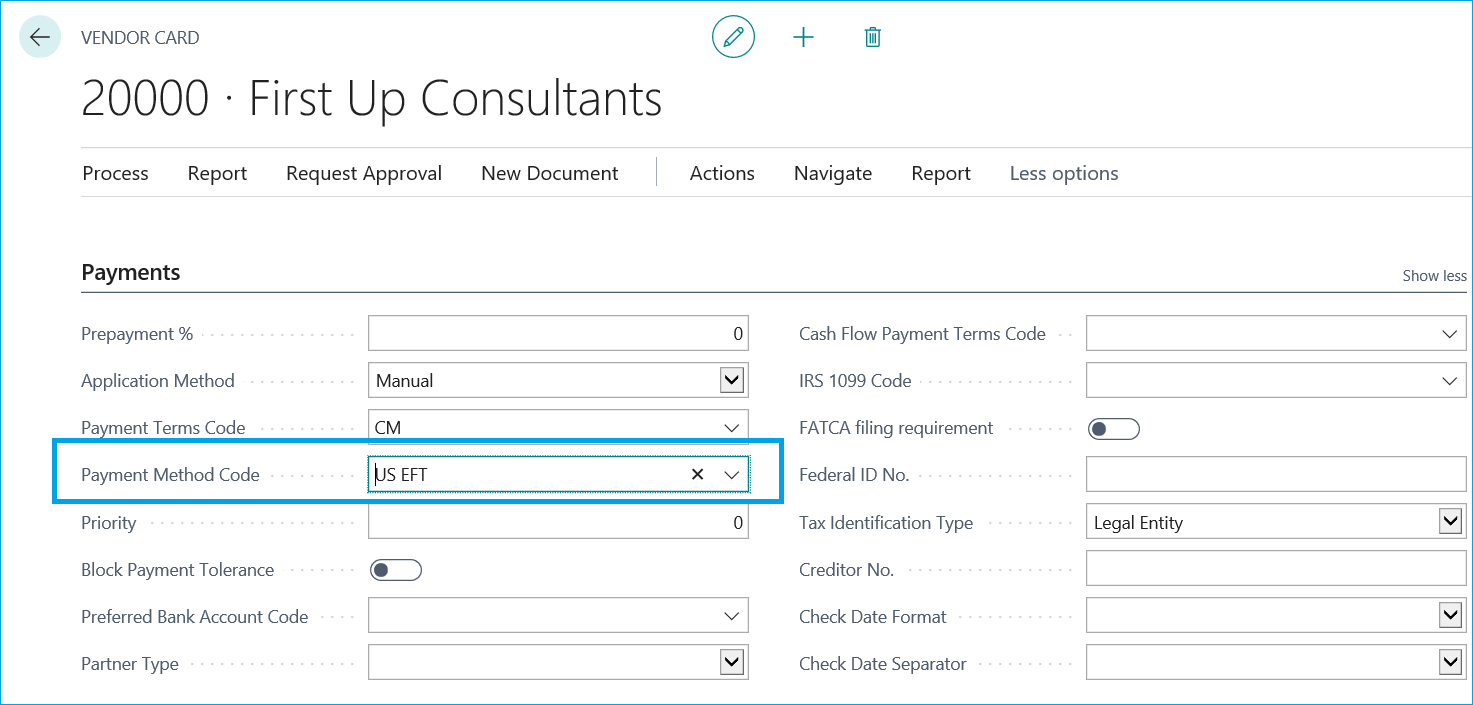
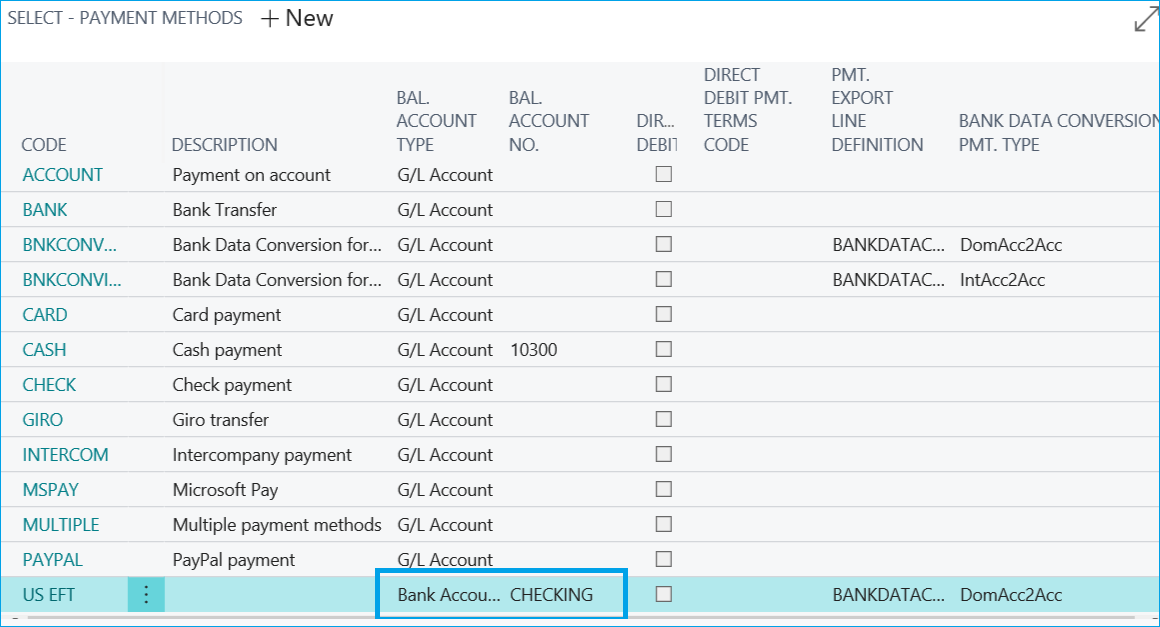
Then while still in the Vendor Card, select Navigate > Vendor > Bank Accounts.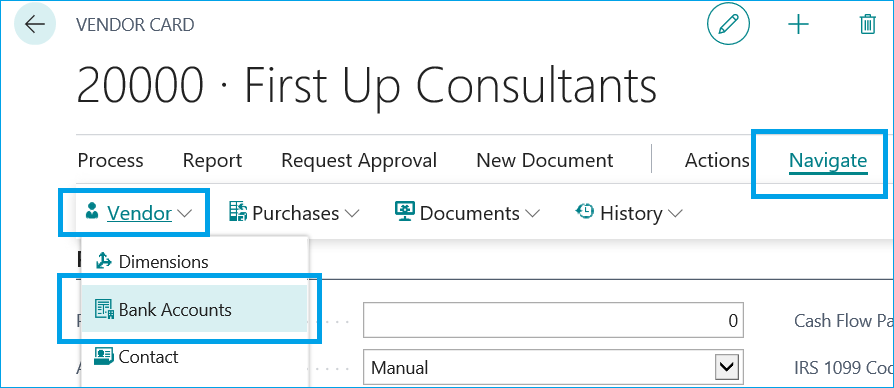
Create a new vendor bank account card. Be sure to enter the bank account information in the General section per below.
Also enable the ‘Use for Electronic Payments’ button in the Transfer section.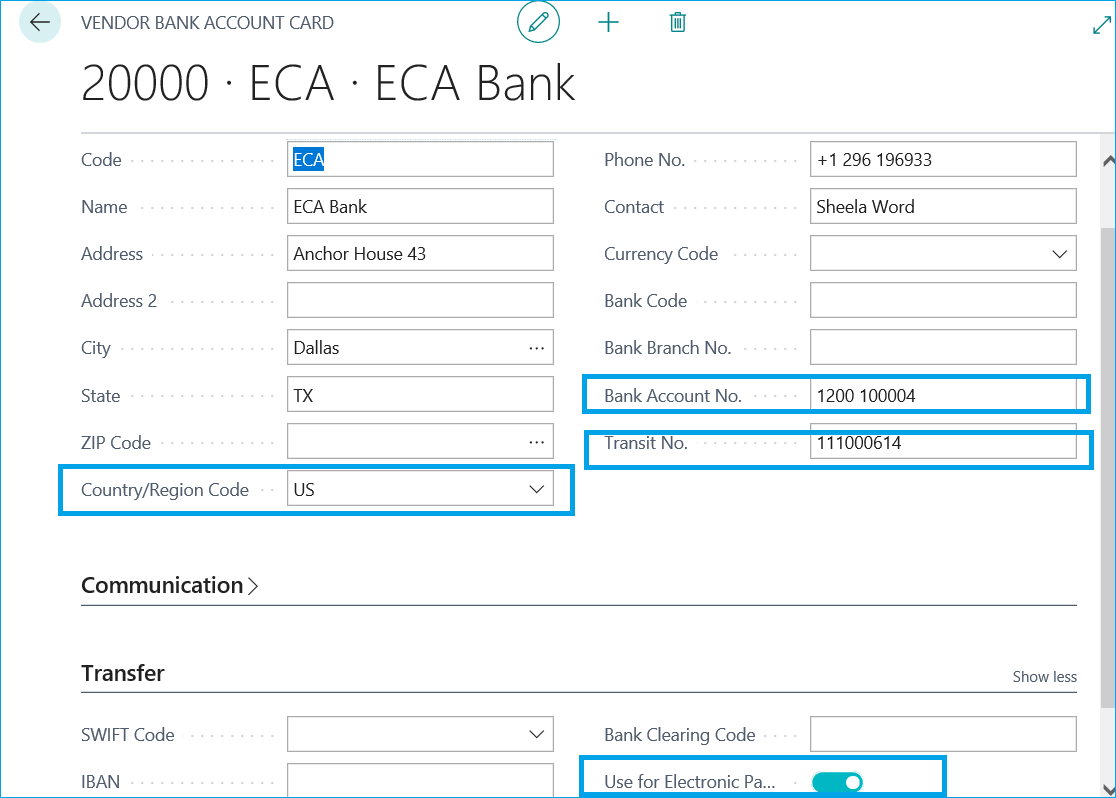
You are now ready to generate an EFT file for the vendor.
Enter and post a purchase invoice. Then go to Cash Management > Payment Journals.
Be sure to select the vendor bank account we set up earlier in the ‘recipient bank account’ field.
Also, select the Payment Method code as “US EFT” (also assigned to the vendor card).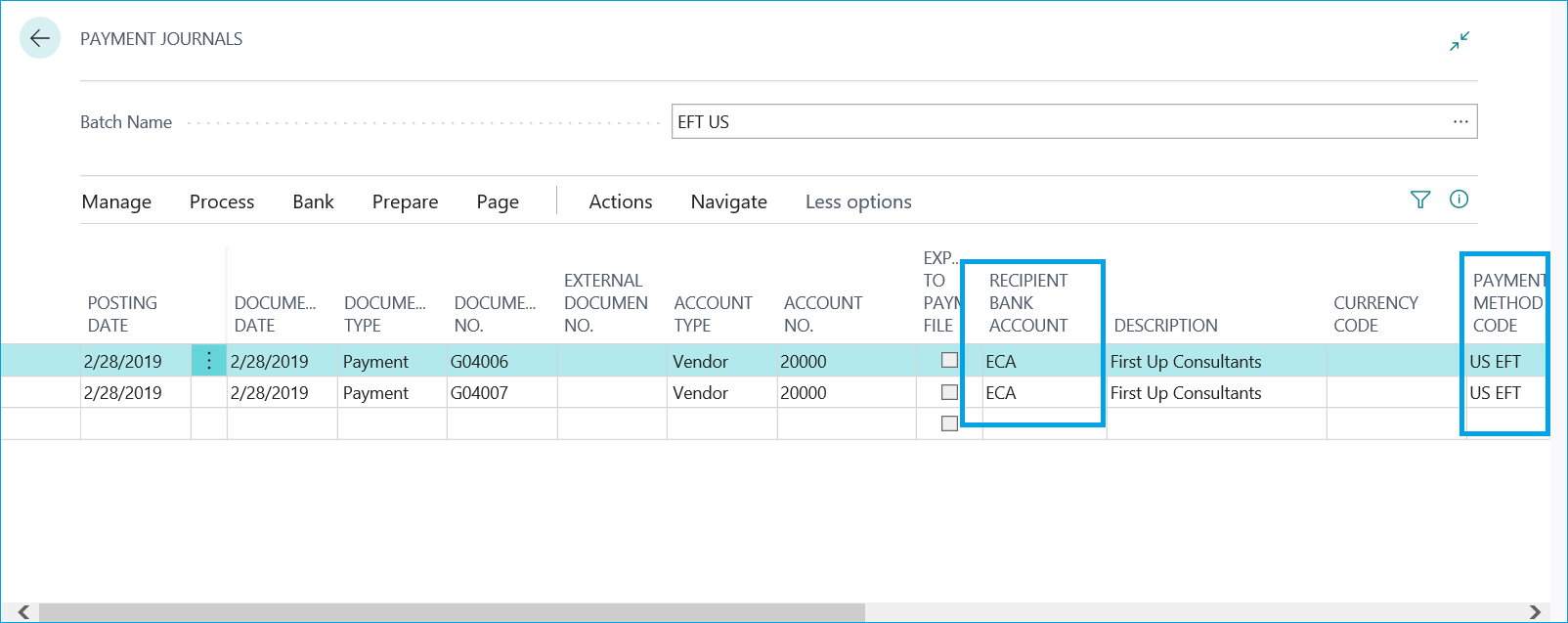
The Bal Account Type should be “bank account” and the Bank Payment Type should be “Electronic Payment.”
After selecting the invoices for payment and completing the fields shown above, click Process > Export. This will generate the Remittance Advice for the vendors. They can also be e-mailed to the vendor.
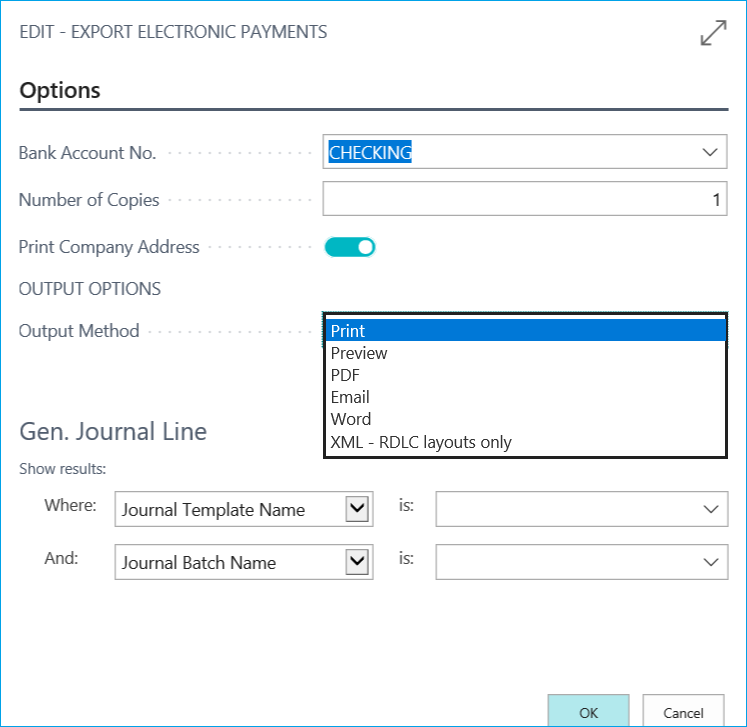
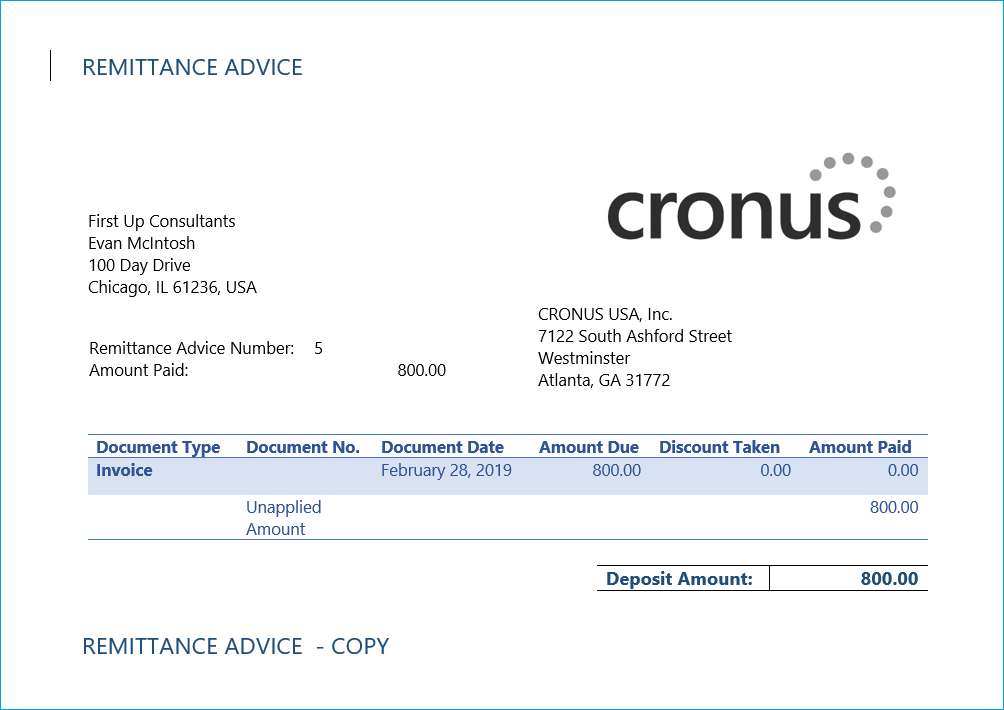
After the remittances have generated, the entry must be posted (it cannot be deleted). This is controlled by the ‘Check Printed’ checkbox:
Next, go to Actions > Functions > Generate EFT File.
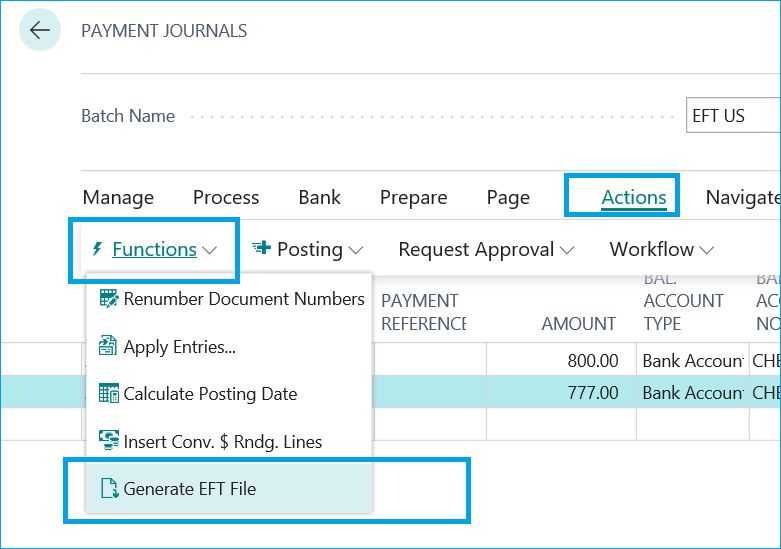
Make sure all the payments are included and click Process > Generate EFT files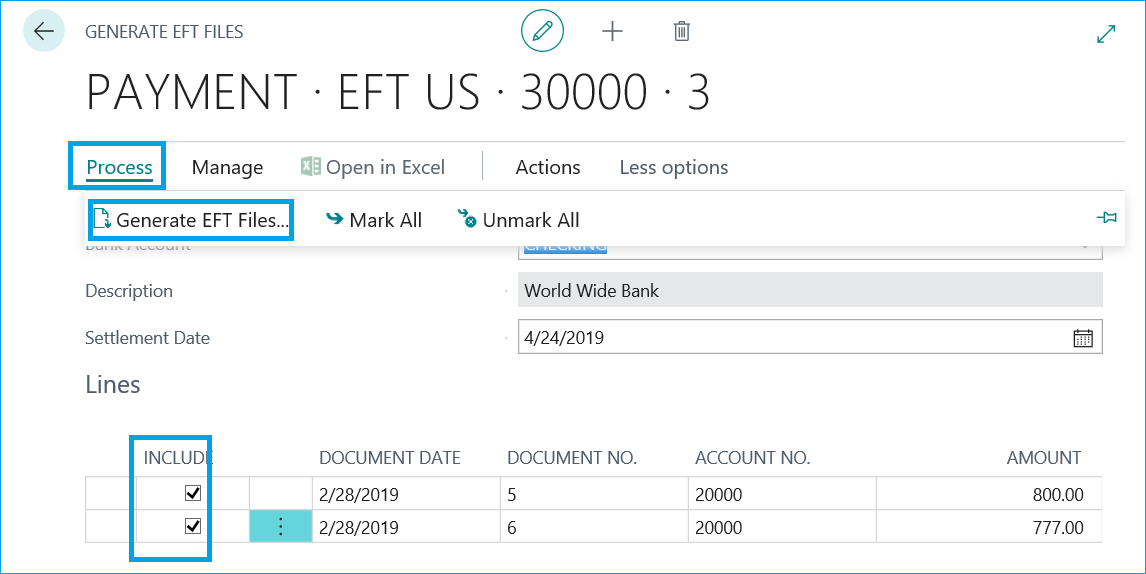
It will prompt you for a location to save the file. The file can now be submitted to the bank.
With a few simple steps, you’re now ready to process payments using EFT/ACH in Dynamics 365 Business Central. For more Business Central tips, subscribe to our blog and be sure to visit (and subscribe to!) our YouTube channel.
